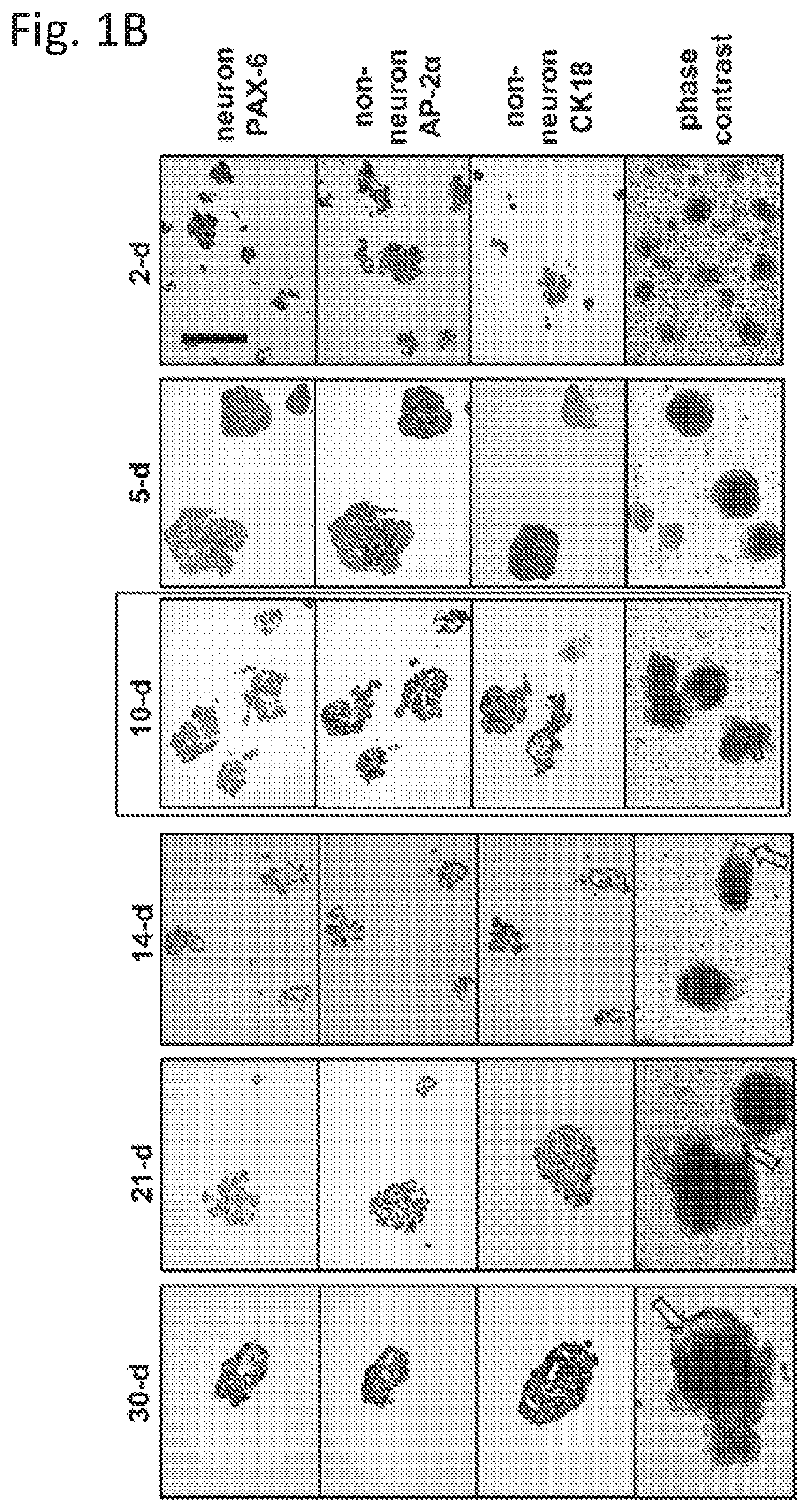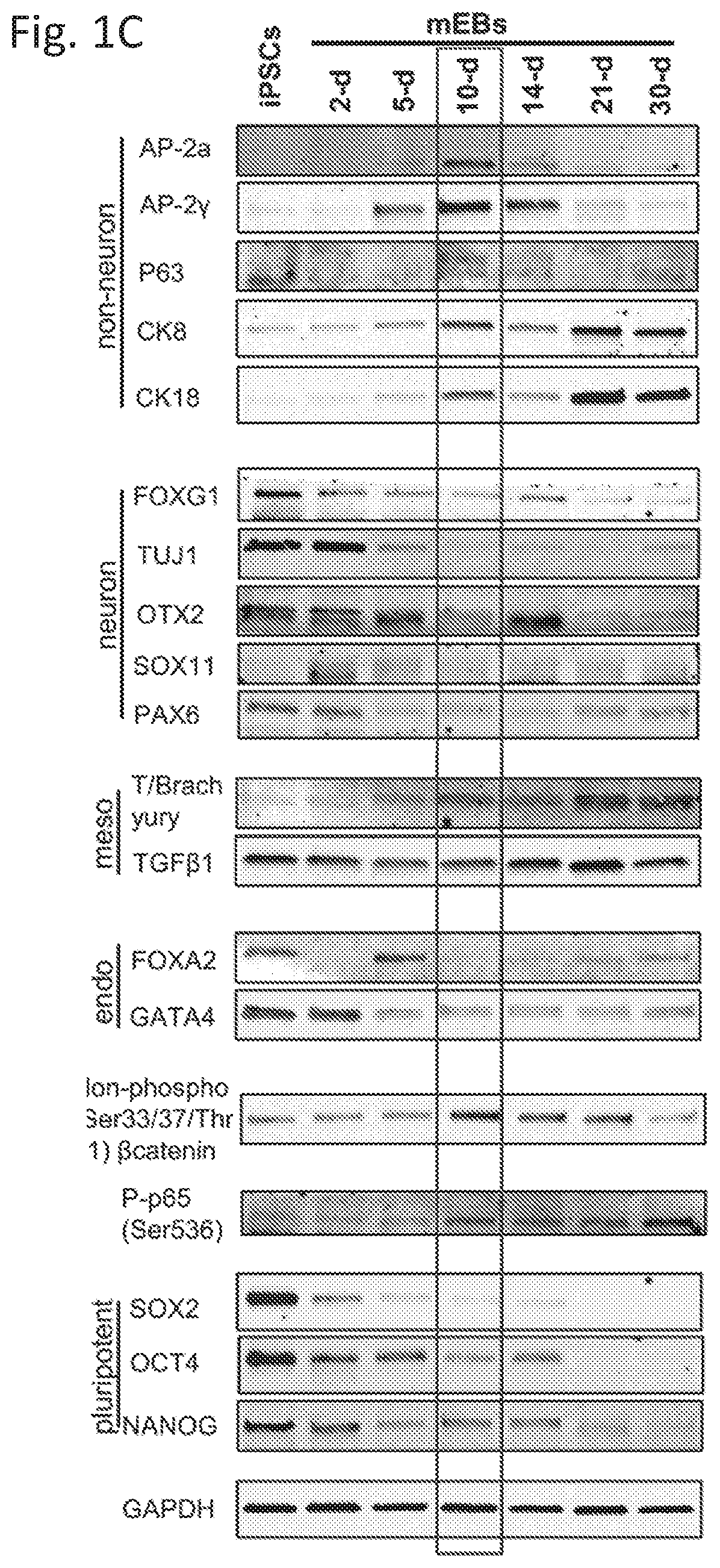In vitro induction of mammary-like differentiation from human pluripotent stem cells
a technology of human pluripotent stem cells and mammary glands, which is applied in the field of induction of mammary cells from pluripotent stem cells, can solve the problems of poor understanding of the molecular biology of early human mammary gland development, and no study has reported on the induction of mammary-like cells and organoids from hipscs
- Summary
- Abstract
- Description
- Claims
- Application Information
AI Technical Summary
Benefits of technology
Problems solved by technology
Method used
Image
Examples
example 1
Human Tissues
[0031]This study was approved by the Institutional Review Board (IRB) at Cedars-Sinai Medical Center. Normal human breast tissues were obtained from prophylactic surgeries with written informed consent.
example 2
Culture of MammoCult-Derived Embryoid Bodies (mEBs)
[0032]To generate mEBs, iPSCs were lifted using Accutase (Innovative Cell Technologies, Inc., San Diego, Calif.) and suspended in the complete MammoCult medium (StemCell Technologies), which was composed of the basal medium, proliferation supplements, heparin (4 μg / mL), and hydrocortisone (0.48 μg / mL).
example 3
Mammary-Like Organoid Differentiation
[0033]3D culture was performed by embedding 10-d mEBs in mixed Matrigel (2.5 mg / mL) / Collagen I (1 mg / mL) gel on the Nunclon delta surface culture plate (Sigma). The mammary differentiation was divided into three stages using complete EpiCult B medium supplemented with different hormone and growth factors. All 3 iPSC lines formed mammary organoids with similar efficiency with the described protocol. Detailed information is provided in supplemental information.
PUM
 Login to view more
Login to view more Abstract
Description
Claims
Application Information
 Login to view more
Login to view more - R&D Engineer
- R&D Manager
- IP Professional
- Industry Leading Data Capabilities
- Powerful AI technology
- Patent DNA Extraction
Browse by: Latest US Patents, China's latest patents, Technical Efficacy Thesaurus, Application Domain, Technology Topic.
© 2024 PatSnap. All rights reserved.Legal|Privacy policy|Modern Slavery Act Transparency Statement|Sitemap



